Results show the feasibility of soybean products and chicken meal to replace up to 60 percent of fishmeal in P. monodon feeds
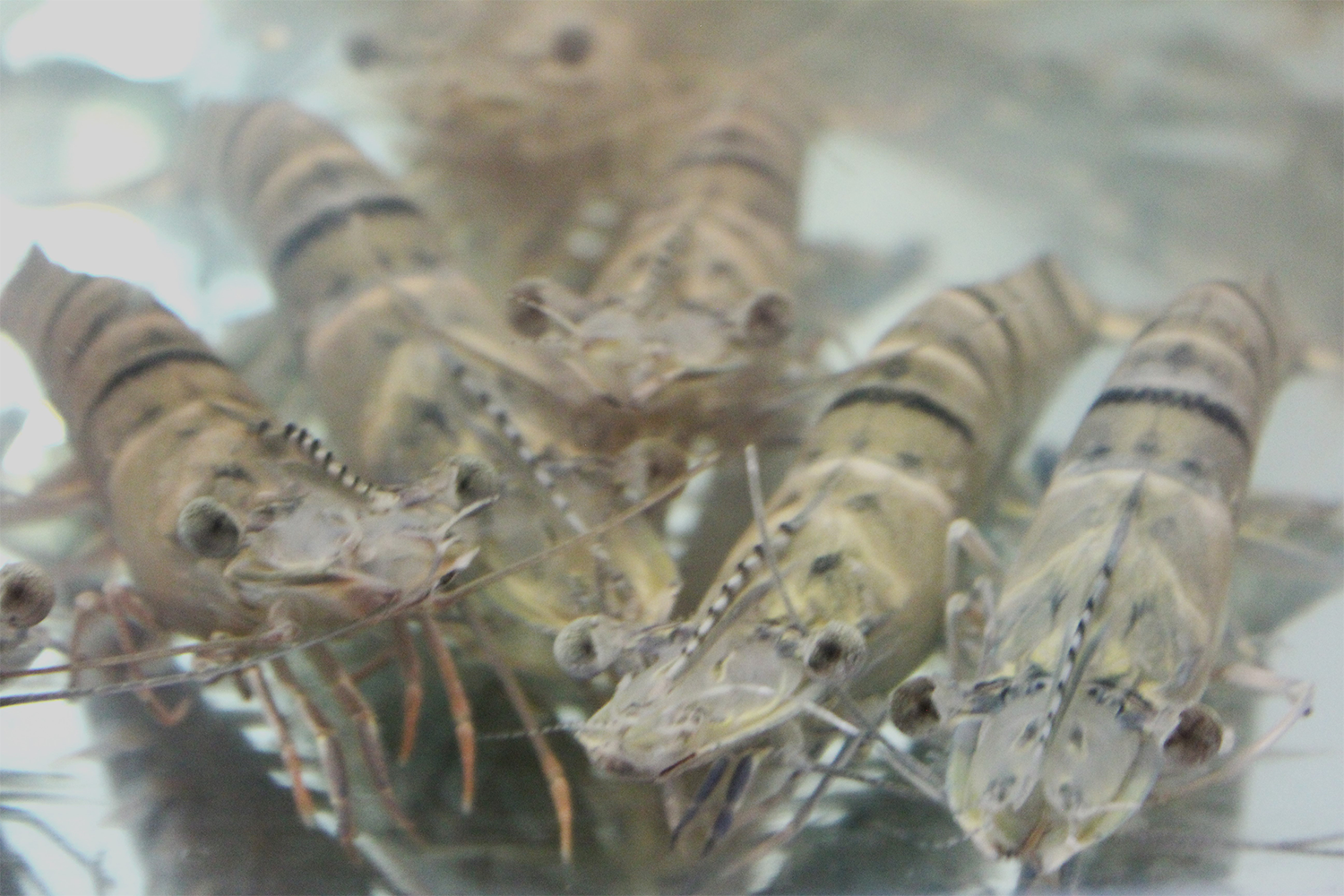
The black tiger shrimp (Penaeus monodon) is one of the most commercially important shrimp species cultured – primarily in the Indo-Pacific region in countries like India, Vietnam, Indonesia, Thailand and others – and currently contributes over 500,000 MT of farmed production annually. As for most fed aquaculture species, there is much interest in new ingredients for P. monodon aquafeeds that can replace traditional ones like fishmeal.
Many alternative protein sources have been used to replace fishmeal in aquafeeds, including poultry byproduct meal, meat and bone meal, soybean meal, blood meal, cottonseed meal, peanut meal, rapeseed meal, soybean protein concentrate and others. Soybean meal has been successfully used to replace fishmeal partially or completely in aquafeeds for several aquacultured species, including fish and shrimp species like P. monodon.
Chicken meal made from the waste, residual mince and offal generated during meat processing has attracted much attention from the animal protein source production market due to its rich nutritional value, high digestibility, amino acid balance and high biological conversion rate. Studies have shown that chicken meal is a high-quality animal protein source for farmed fish and shrimp.
This article – summarized from the original publication (Yang, W. et al. 2024. Effects of Partial Substitution of Fish Meal with Soybean Products and Chicken Meal on Growth, Antioxidant Capacity and Intestinal Microbiota of Penaeus monodon. Fishes 2024, 9(1), 42) – presents the results of research to study the effects of partially and completely substituting fishmeal with both soybean products and chicken meal on the growth performance, digestive enzymes, the antioxidant capacity of the hepatopancreas, and the intestinal microbiota of P. monodon.
Study setup
The authors investigated the effects of the partial substitution of fishmeal with soybean products and chicken meal on the growth performance, antioxidant capacity and intestinal microbiota of P. monodon. The eight-week study was conducted at the Shenzhen Base of the South China Sea Fisheries Research Institute, Chinese Academy of Fishery Sciences. The P. monodon shrimp (3.44 ± 0.03 g) used in the experiment were from a new line selected by the research team.
A total of 450 healthy shrimp were randomly divided into five groups, with three replicates per group and 30 shrimp per replicate. The proportion of fishmeal substituted in the treatment diets with soybean products and chicken meal in the five feed groups was 0 (FM), 40 (40SC), 60 (60SC), 80 (80SC) and 100 percent (100SC). Additional crystal amino acids were added to meet the amino acid requirements of the shrimp.
For detailed information on the experimental design and animal husbandry; formulation and preparation of the experimental diets; composition analysis of whole shrimp; determination of antioxidant enzymes in the hepatopancreas of shrimp; and data collection and analyses, refer to the original publication.
Robins McIntosh on everything you need to know about EHP and shrimp farming, part 1
Results and discussion
In this study, we used chicken meal and soybean products as substitutes for part of fishmeal. Results showed that with an increase in the substitution rate, the weight gain (WG) and survival rate (SR) in all the treatment groups decreased. The WGs and SRs in the 80SC and 100SC groups significantly decreased compared to those in the FM group, but there was no significant difference, although those in the 40SC and 60SC groups had a slight decrease. The feed conversion ratio (FCR) showed a decreasing trend; the FCR in the 100SC group significantly increased, while there was no significant difference between the FM group and the 40SC, 60SC and 80SC groups. Overall, these results are similar to those of other studies and show that it is feasible to partially replace fishmeal with soybean products and chicken meal at up to 60 percent.
Oxidative stress is one of the response mechanisms of animal organisms to environmental stress. Changes in the diet of aquatic animals may affect their antioxidant capacity and immunoenzymatic activity. Under environmental stress, many reactive oxygen species will be produced in the body, resulting in physiological damage to the organism. P. monodon has a relatively complete antioxidant system, which can maintain the animal’s homeostasis with the intervention of various antioxidant enzymes – including acid phosphatases (ACP), alkaline phosphatase (AKP), total superoxide dismutase (T-SOD) and total antioxidant activity (T-AOC) – in the hepatopancreas. All these are very important in maintaining the balance between oxidation and antioxidants in the body, a normal metabolism, as well as important roles in the immune response of the shrimp.
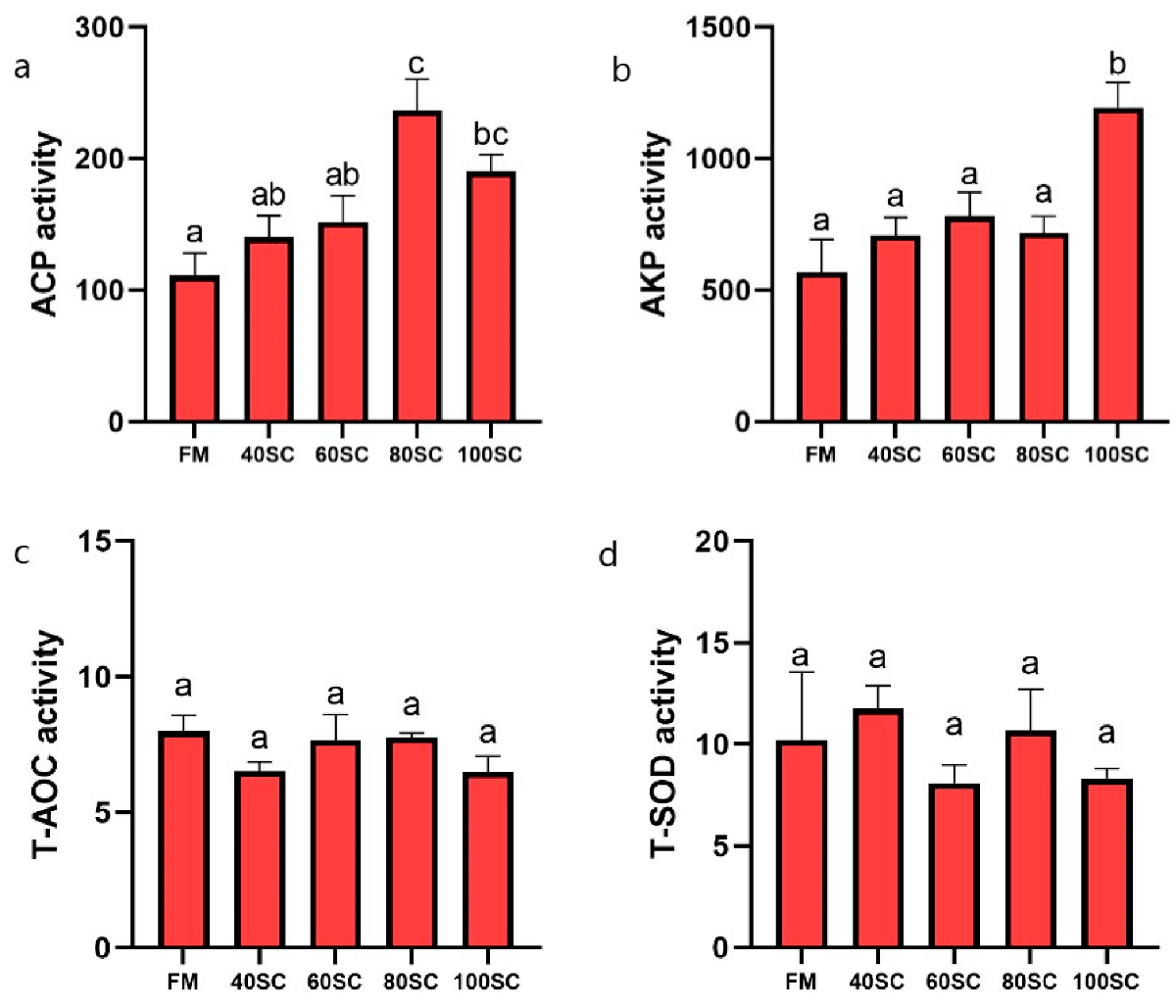
In our study, we found no significant difference between the T-SOD and T-AOC contents among all the groups, indicating that using chicken meal and soybean products as partial substitutes for fishmeal would not have a significant effect on the antioxidant capacity of P. monodon. The ACP content in the 80SC and 100SC groups was significantly increased compared to that in the FM group, while that in the 40SC and 60SC groups had a slight increase, but there was no significant difference. The AKP content in the 100SC group was significantly high, while there were no significant differences among the other four groups, indicating that a long-term high substitution level would cause the organism to be continuously subjected to stress. The 40SC, 60SC and FM groups did not have significant differences among their ACP and AKP contents, indicating that the ingredient substitutions in the treatment diets had no effect on the shrimp evaluated.
Intestinal microbiota refers to the large number of microorganisms present in the intestinal tract of animals and help animals carry out a variety of physiological and biochemical functions. Ingredient changes in aquafeeds could potentially have some impact on the intestinal microbiota. Many studies have shown that phylum Proteobacteria are the dominant bacteria in the gut of shrimp, and some members of this phyla are involved in the nitrogen cycle and the mineralization of organic compounds. In our study, Proteobacteria were the most abundant bacteria in the five groups, accounting for 37.67, 66, 40, 40 and 43.33 percent, respectively.
Compared to the FM group, the abundance of phylum Fusobacteriota in the other four groups decreased significantly. Fusobacteriota are supportive of food digestion and absorption, and in our study, the abundance of Fusobacteriota in the substitution groups decreased significantly, so we speculated that it may have been due to the anti-nutritional factors in soybean products, which can hinder the absorption and utilization of proteins. This also explains why the WG in the substitution groups decreased.
Overall, our results will help enhance our understanding of the effect of soybean products and chicken meal on P. monodon and provide basic data and a reference for the formulation and optimization of feed for P. monodon.
Perspectives
Using soybean products and chicken meal as substitutes for 40 and 60 percent of fishmeal did not affect the growth performance and antioxidant capacity of P. monodon and the intestinal microbiota of P. monodon remained stable and did not cause damage to the organism. However, a high substitution ratio can affect the growth and immunoenzyme activity of P. monodon. Considering the effects on growth performance, antioxidant capacity and intestinal microbiota, it is feasible to use soybean products and chicken meal to replace 60 percent of fishmeal.
Now that you've reached the end of the article ...
… please consider supporting GSA’s mission to advance responsible seafood practices through education, advocacy and third-party assurances. The Advocate aims to document the evolution of responsible seafood practices and share the expansive knowledge of our vast network of contributors.
By becoming a Global Seafood Alliance member, you’re ensuring that all of the pre-competitive work we do through member benefits, resources and events can continue. Individual membership costs just $50 a year.
Not a GSA member? Join us.
Author
-
Dr. Falin Zhou
Corresponding author
Key Laboratory of Aquatic Product Processing, Ministry of Agriculture and Rural Affairs, South China Sea Fisheries Research Institute, Chinese Academy of Fishery Sciences, Guangzhou 510300, China
Tagged With
Related Posts
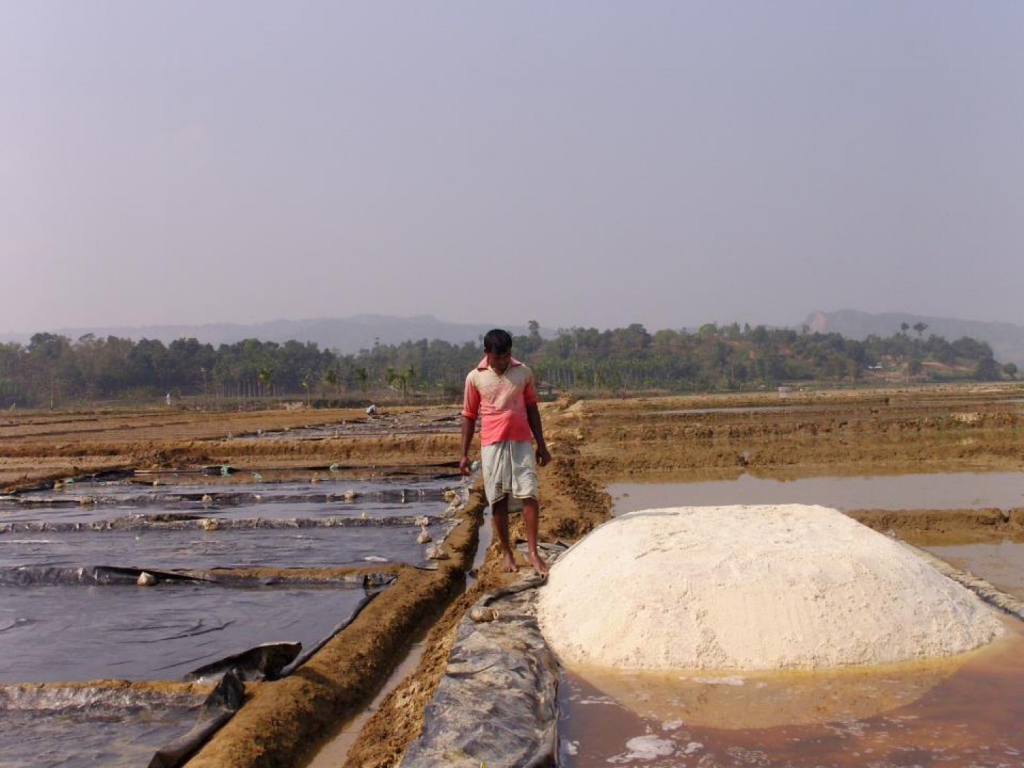
Innovation & Investment
Artemia, the ‘magic powder’ fueling a multi-billion-dollar industry
Artemia, microscopic brine shrimp used as feed in hatcheries, are the unsung heroes of aquaculture. Experts say artemia is still inspiring innovation more than 50 years after initial commercialization. These creatures are much more than Sea-Monkeys.
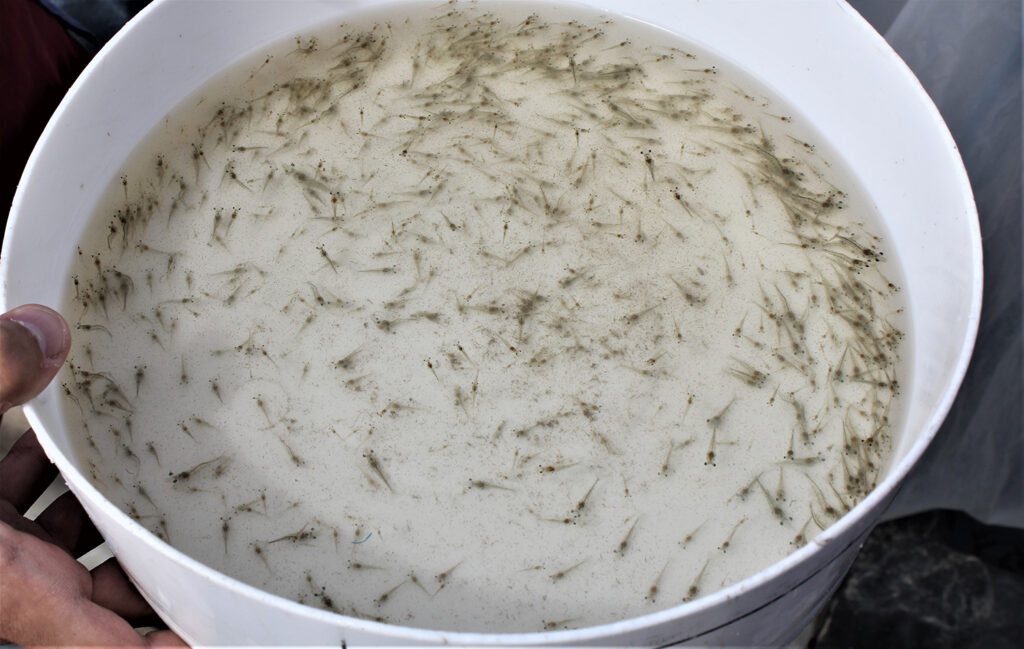
Health & Welfare
Evaluating the effects of dietary spray-dried animal plasma on Pacific white shrimp
An evaluation of L. vannamei fed diets with spray-dried animal plasma showed significant improvement in overall health and resistance to infection.
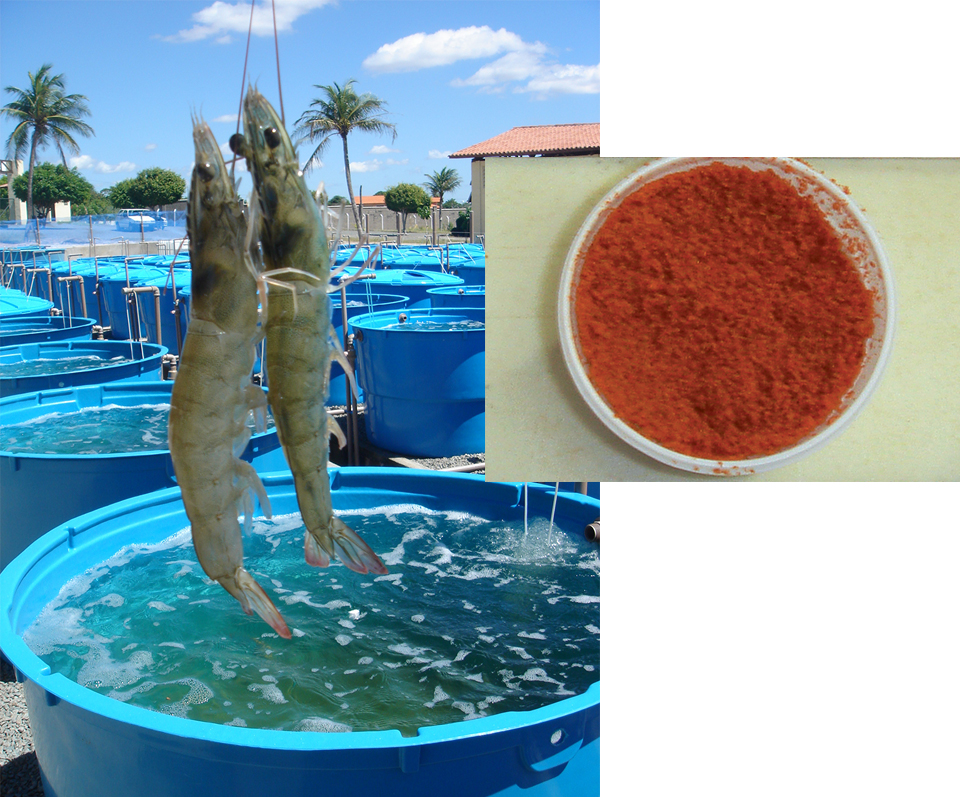
Health & Welfare
Krill meal use reduces other costly ingredients in shrimp study diets
Due to its high protein and highly unsaturated fatty acids content, krill meal can be an effective ingredient in aquafeed.
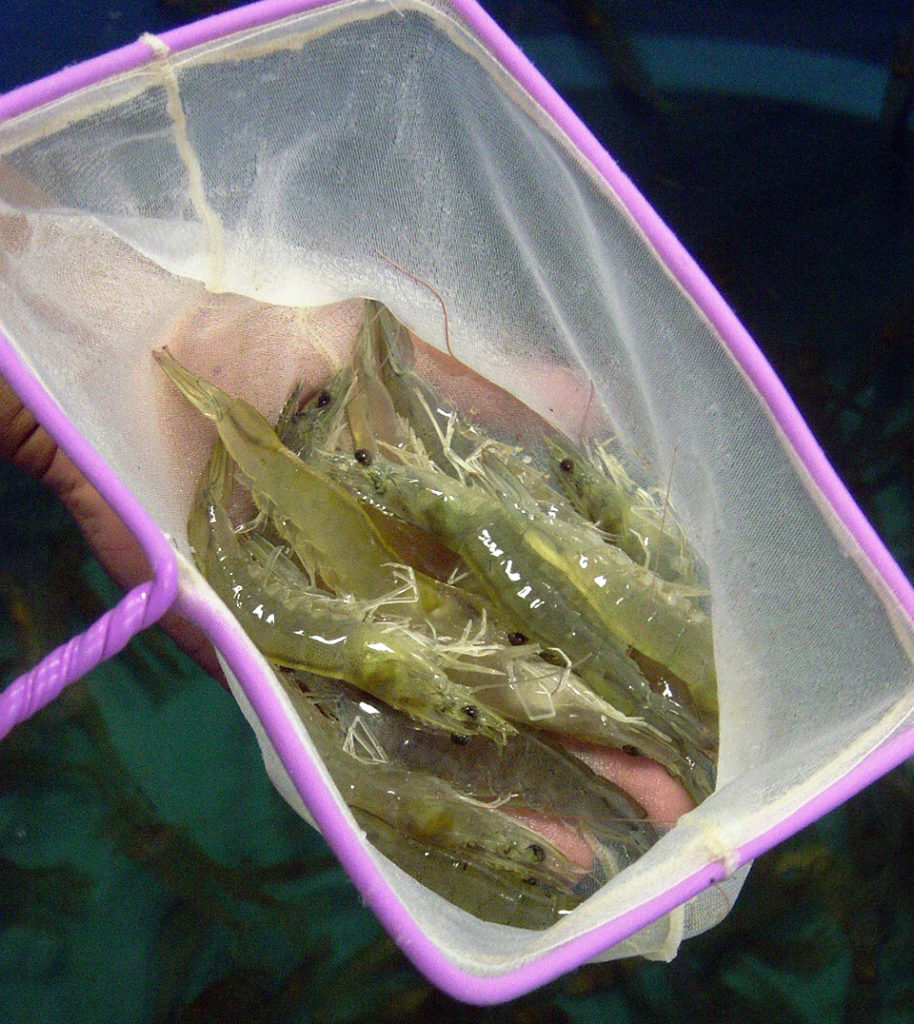
Aquafeeds
Methionine hydroxy analog supplements low-fishmeal shrimp diets
In a study, the authors evaluated the performance of juvenile white shrimp grown at high density and fed diets with varying levels of methionine. Trends toward improvements in feed intake were observed for diets with reduced fishmeal and HMTBa supplementation.



